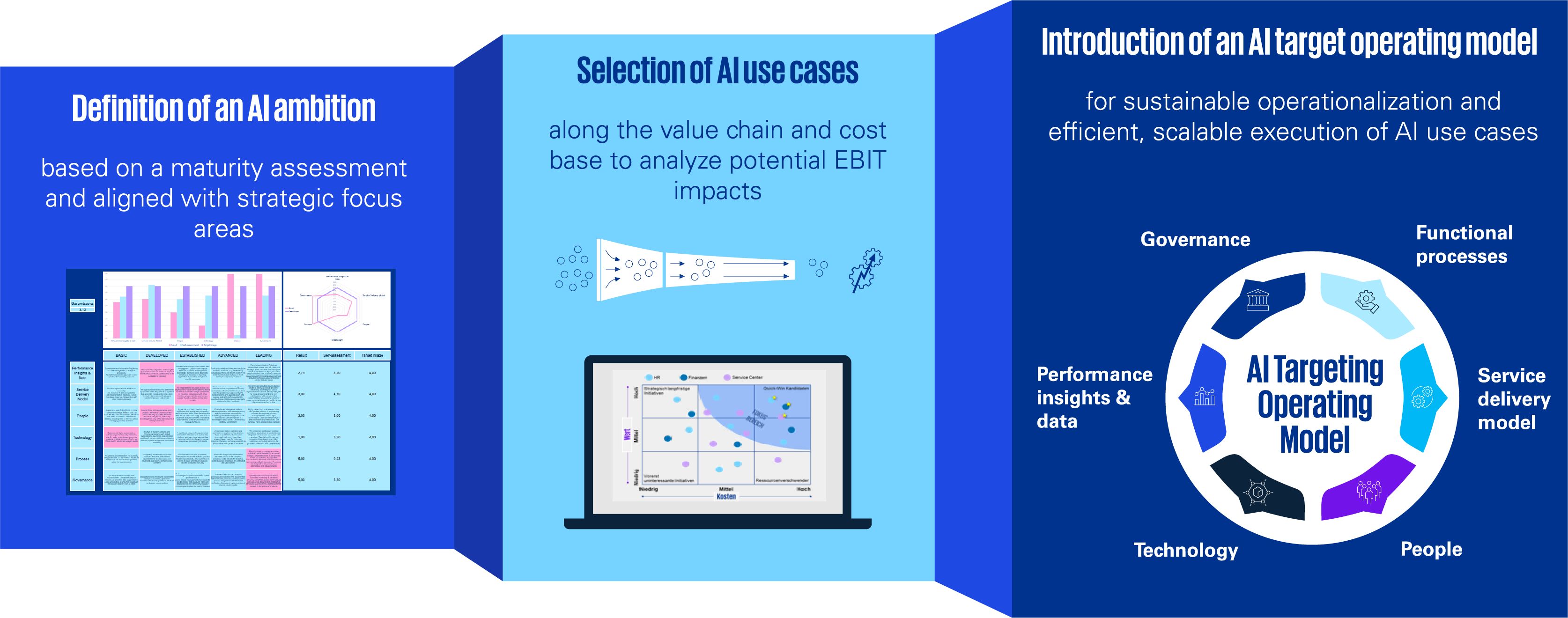The challenge
Technological innovations are increasingly dominating the market and artificial intelligence (AI) can be the decisive competitive advantage. However, despite the enormous potential that AI offers, many companies face considerable challenges. One of the biggest hurdles is developing a clear and actionable AI strategy that not only supports current business goals but is also future-proof.
Another key problem is the implementation of a target operating model (TOM), which enables the integration of AI into existing business processes. This requires not only technical expertise, but also a deep understanding of business goals and processes. The uncertainty in dealing with AI technologies and the lack of transparency of the underlying models add to the complexity.
Finally, companies must ensure that their AI strategy is not only successful in the short term, but also remains scalable and sustainable in the long term. This requires continuous adjustments and improvements to keep pace with rapid technological developments and ensure long-term success.
Andreas Fachinger
Partner, Consulting, Lighthouse Germany - AI & Data Solutions
KPMG AG Wirtschaftsprüfungsgesellschaft
Our solution
We support companies in defining their AI strategy and developing a robust target operating model. From the vision, through the selection of the right AI use cases, to the sustainable scaling of your AI activities, all key dimensions are taken into account: Performance Insights, People, Processes, Governance, Technology and Service Delivery.

The first step is to define an AI ambition level based on a maturity assessment and the business strategy. In addition to defining a vision, an analysis of the current situation is carried out and goals and target states are defined for each level. Based on a gap analysis, the need for change is defined and short, medium and long-term fields of action are derived.
In this phase, the concrete AI strategy and a detailed TOM are created. Relevant AI use cases are prioritised based on their business case and an implementation plan or roadmap is developed. The organisational changes are also evaluated. The focus here is on the six dimensions of the TOM.
The TOM is being iteratively developed further by implementing the first use cases. This includes the definition and implementation of proof of concepts (PoCs) and the successive improvement of the TOM. At the same time, the AI organisation is gradually being expanded and the changes are being communicated transparently.
In this phase, the AI strategy is implemented operationally by integrating the new operating model into existing workflows. This includes the expansion of AI solutions to other business processes and the further development of the organisational and operational structure.
After the go-live, we support you in deriving measures that take into account the progress of the changes. Our goal is to sustainably scale and continuously improve your AI activities.




